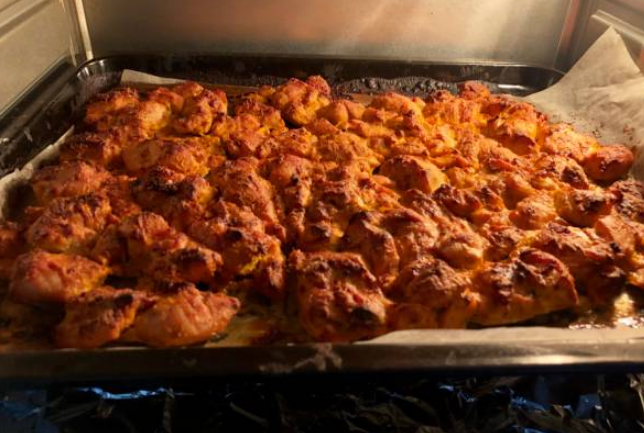How to Keep Meat from Drying Out in the Oven

Chicken, hamburger, pork, and different cuts of meat can be a tasty piece of your supper, however it very well may be frustrating when these meats turn out dry and extreme. There’s no enchanted button on your stove that will hold your food back from drying out, yet there are a couple of simple precautionary measures you can take that might help your meat taste succulent and tasty later you remove it from the broiler.
Ingredients
Milk-Based Cooking Sauce
⦁ 2 1⁄2 c (590 mL) of milk
⦁ 2 lemons, zested
⦁ 1 cinnamon stick
⦁ Sage leaves
⦁ 3-4 garlic cloves
Method 1:
Picking and Prepping Meat
⦁ Select fattier cuts of meat for your recipes. Counsel a butcher as opposed to purchasing your meat straightforwardly off the racks and coolers. Inquire as to whether you can get cuts of meat with a smidgen of fat appended, or with the bone still in. Assuming you utilize a fattier choice of meat, your slice will not be as liable to dry out in the oven. For example, chicken thighs will quite often turn out clammy subsequent to being heated in the stove, instead of chicken bosoms. As it cooks, the fat will dissolve into a fluid that keeps the meat wet.
⦁ Pour a basic milk-based sauce over the meat prior to cooking it. Place your meat in an enormous baking plate, then, at that point, pour in 2 1⁄2 c (590 mL) of milk. Include 2 lemons worth of zing, alongside 3-4 garlic cloves, a cinnamon stick, and a couple of sage leaves. Prepare your meat for 1 hour and 30 minutes at 375 c (89,000 mL), and enjoy! This recipe functions admirably with an entire chicken. Any milk-based sauce recipe will assist with keeping your meat succulent while it cooks.
⦁ Absorb your meat brackish water prior to popping it in the broiler. Place your cut of meat on a baking dish, then, at that point, sprinkle some salt and pepper up and over. For juiciest meat, have a go at absorbing your meat a custom made brackish water arrangement prior to cooking it. Lower the meat in the brackish water and spot it in the cooler for a very long time so it can absorb the pungent solution Salt waters work for an assortment of meats, similar to turkey and pork cleaves.
⦁ Carry refrigerated meat to room temperature before you cook it. Place your refrigerated cut of meat on a spotless plate, then, at that point, let it sit for around 15 minutes so it can change in accordance with room temperature. Assuming you move your meat from the fridge to the stove, it won’t cook uniformly and may wind up dry.
⦁ Cover your meat with material paper or foil prior to cooking it. Place your part of meat on a baking plate, then, at that point, tear away a segment of foil and material paper. Wrap the paper or foil over your meat, then, at that point, stick it in the stove for the necessary time. As your meat cooks, the covering will assist it with holding its very own greater amount juices. This is otherwise called “dry-poaching.”
Method 2:
Guaranteeing Moist Results in the Oven
⦁ Burn your meat on the burner prior to placing it in the stove, whenever wanted. Oil a skillet and let it heat up on your oven. Place your cut of meat down with the fattiest side of meat contacting the container. Leave your cut of meat set up for 2-3 minutes, then, at that point, flip it over. Really look at the inside temperature of the meat to check whether it’s completely cooked or not—assuming the meat is as yet crude, place it in the stove for 10 minutes or thereabouts, utilizing a thermometer occasionally to check whether the meat is completely cooked. The specific cooking temperature will rely upon the sort of meat you’re working with. Twofold check your recipe before you begin cooking, as a sanity check. For example, burned pork hacks need to heat at 400 °F (204 °C).
⦁ Pick the best stove settings for your cut of meat. Contemplate the sort of meat you’re anticipating cooking, alongside how thick or delicate the cut is. Note that more delicate segments of meat can be simmered and stove seared, while thicker segments of meat are more ready with wet hotness, similar to a lethargic cooker. Simmering is an extraordinary choice assuming you’re working with an enormous segment of meat. For instance, heated chicken and pork slashes should be cooked at 400 °F (204 °C) in the stove, while an entire turkey should be prepared at 350 °F (177 °C).
⦁ Test the meat with a thermometer to screen the inward temperature. Stick a meat thermometer into the thickest piece of your cut of meat prior to removing it from the broiler. Twofold check that the meat arrives at the suggested temperature however isn’t excessively far finished. You can generally look at the meat while it’s cooking to perceive how the interior temperature is looking.
⦁ Allow the meat to sit for 5 minutes in the wake of removing it from the broiler. Remove your meat from the stove and move it to a perfect plate. Try not to dive into your food immediately—all things being equal, set a clock for 5 minutes and permit the meat to “rest,” or become more delicate and moist. This might appear to be insignificant, yet these 5 minutes can have a major effect!
⦁ Repurpose overcooked meat into exquisite pies and dumplings. Slash your meat into fine pieces, then, at that point, blend it in a blender in with cooking sherry and any extra dripping. Utilize this purée as a filling for pasta, dumplings, or some other stuffed food of your choice!



